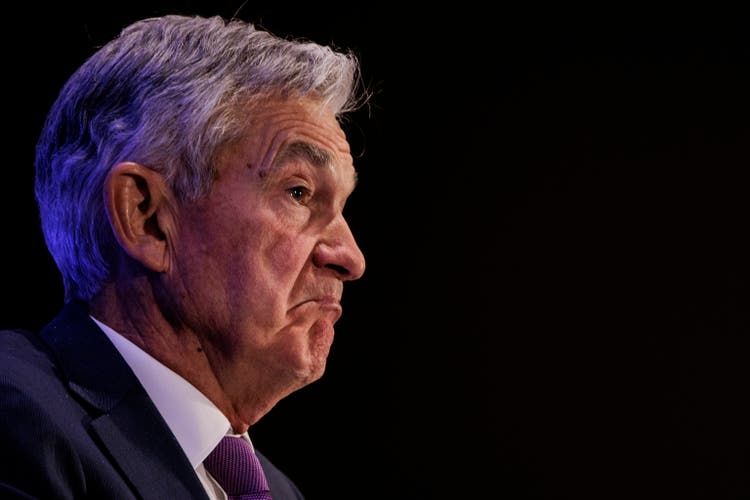Samuel Corum
The stock market does this.
It’s all about the Federal Reserve.
The stock market does that.
It’s all about the Federal Reserve.
Unfortunately, the Federal Reserve seems to be dominating everything that the stock market does these days.
This past Friday…
we found that the labor market added 528,000 new jobs in July, twice as many as economists had been predicting…
and, the unemployment rate dropped to 3.5 percent, remaining near the lowest level in several decades.
And, the basic response of investors?
Well, these numbers, investors thought, will cause the Federal Reserve to stick with its current efforts to tighten up on monetary policy and not “back off” from the tightening as early as many investors were expecting them to “back off.”
As Akane Otani and Caitlin Ostroff write in the Wall Street Journal,
“Investors had come to widely believe that the Fed could pivot to cutting interest rates as early as the first half of 2023, given signs of cooling activity across the economy.”
“That would have been balm for markets, which have tumbled this year as the Fed has swiftly raised interest rates to combat stubbornly high inflation.”
“Buy Friday’s data showed the labor market was doing anything but cooling.”
And, so there you are.
It’s all about the Federal Reserve!
That’s The Problem
When the Federal Reserve comes to dominate the headlines, that is the problem.
I have been writing about this for weeks now.
Central bank actions should not dominate discussions about market performance.
When that happens, one can only conclude that the Federal Reserve has severely mismanaged things, and now, everything seems to depend upon what the Federal Reserve is going to do.
I would strongly argue that this is where we are now.
Jerome Powell and his colleagues have managed things so as to make all the events of the future depends upon what they are going to do.
Or, at least this is what the investment community believes.
Begun Under Ben Bernanke
This reign of the Federal Reserve began when Ben Bernanke was the chair of the Board of Governors of the Fed.
Mr. Bernanke argued in the time following the Great Recession, which is dated from December 2007 to June 2009, that the Fed needed to create a rise in the stock market so as to create a wealth effect that would get consumers spending more rapidly.
And, that is exactly what Mr. Bernanke and the Federal Reserve did.
But, that is what the Federal Reserve kept doing….stimulating the stock market.
The economic recovery that lasted from July 2009 through to February 2020, the longest post-World War II expansion on record, saw a stock market that was very dependent upon what the Federal Reserve was doing.
The Federal Reserve, during this period of time, pursued a policy of “credit inflation,” a policy that generated rising asset prices, but not consumer prices.
As a consequence, the stock market thrived and achieved one new historical market high after another.
This continued through the Covid-19 Recession, from February 2020 through April 2020, where the Federal Reserve pumped trillions of dollars of new liquidity into the financial system.
Following this recession, given the Fed’s largess, the stock market continued to reach new historic highs.
The Standard & Poor’s 500 Stock Index hit its last “new historic high” on January 3, 2022, at 4,796.56.
Since then, investors have been trying to figure out exactly what the Federal Reserve was going to going to do and when these things would take place.
The point is, however, that over all of this time beginning in 2009 the stock market has been almost totally under the sway of Federal Reserve policy.
And, the Federal Reserve, starting with the leadership of Ben Bernanke, acted so as to dominate what it was the stock market was doing.
Of course, the Fed’s policy produced an almost continually growing economy, although at a lower rate than other post-World War II recoveries, a growing economy with low rates of consumer prices increases, and a growing economy with rising asset prices.
Wealth increased enormously over this particular period of time.
The Fed
But, as a consequence of this behavior, investors in the stock market came to be very dependent upon the Federal Reserve.
Many analysts began to refer to the Fed’s “put.”
The Fed’s “put” had to do with the Federal Reserve acting so as to stop or limit any decline the stock market might make.
And, that is what investors are looking for right now.
When is the Fed going to exercise its “put” function?
When is the Fed going to stop the stock market from declining?
This is what I mean about the Fed coming to dominate the headlines. The investment community seems to be betting most of its chips on what the Fed is going to do next.
But, that is a problem.
The world is dominated by uncertainty right now, radical uncertainty.
The Fed has little more insight into the future than we do.
Just start the list.
What is going to happen in Ukraine? What is going to happen with respect to the supply chain problem? What is happening to the labor market and the changes that are taking place there? What is going to happen to England and its 13 percent inflation? What is going to happen to China and Taiwan?
We don’t know what is going to happen to all the debt that has been created over the past two years and the debt markets that seem to be so disjointed these days.
And, so on and so on.
Finally, I must say that I have little or no idea what Mr. Powell might do in the next six months, in the next month, in the next week, tomorrow, or today.
What does that say about where the stock market is going?


Be the first to comment